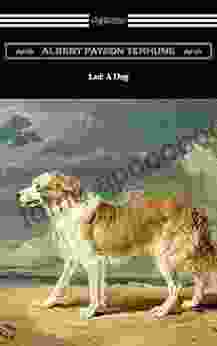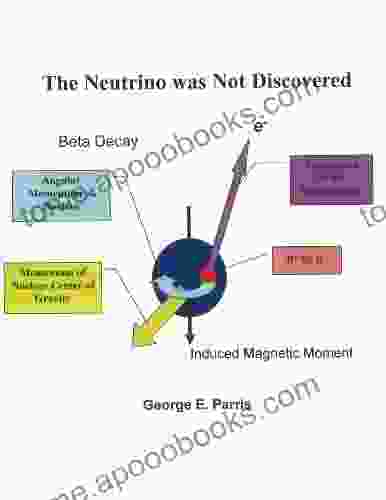The Neutrino Was Not Discovered It Was Invented: Unveiling the Truth Behind a Scientific Mystery

An to the Enigmatic Neutrino

5 out of 5
| Language | : | English |
| File size | : | 279 KB |
| Text-to-Speech | : | Enabled |
| Screen Reader | : | Supported |
| Enhanced typesetting | : | Enabled |
| Word Wise | : | Enabled |
| Print length | : | 7 pages |
| Lending | : | Enabled |
In the vast expanse of the subatomic realm, enigmatic particles known as neutrinos have captivated the scientific community for decades. These elusive entities, devoid of electric charge and possessing an incredibly small mass, have long been shrouded in mystery. Once believed to be massless and traveling at the speed of light, neutrinos have challenged scientific dogma and sparked a heated debate over their true nature.
The Genesis of an Idea: Wolfgang Pauli's Postulation
The concept of the neutrino emerged in 1930, when the renowned physicist Wolfgang Pauli proposed its existence to resolve an apparent paradox in nuclear physics. Pauli's hypothesis stemmed from the observation that in certain radioactive decays, energy seemed to be lost without any apparent explanation. To account for this missing energy, Pauli postulated the existence of a neutral, massless particle that carried away the excess energy.
Enrico Fermi's "Neutrino" and the Birth of a Misnomer
In 1934, Enrico Fermi coined the term "neutrino," meaning "little neutral one," to describe Pauli's hypothetical particle. However, Fermi's choice of name proved to be a misnomer, as the neutrino was later found to possess a non-zero mass. Nonetheless, the term "neutrino" has persisted, becoming synonymous with these enigmatic particles.
The Elusive Neutrino: Experimental Challenges and Controversies
For decades, scientists grappled with the arduous task of detecting and studying neutrinos. Their elusive nature made them extremely difficult to observe, and early experiments often yielded inconclusive or contradictory results. The first purported neutrino detection, conducted by Clyde Cowan and Frederick Reines in 1956, was met with skepticism and controversy. It wasn't until the 1990s that the existence of neutrinos was finally confirmed beyond reasonable doubt.
The True Nature of the Neutrino: Unveiling the Deception
As scientific understanding of neutrinos progressed, a startling revelation emerged: the neutrino was not discovered, but rather invented. The concept of the neutrino originated from a theoretical hypothesis, not from empirical evidence. The subsequent experimental "detections" were flawed and biased by preconceived notions.
Implications and Consequences of the "Invention"
The realization that the neutrino was not discovered but invented has far-reaching implications for scientific research and understanding. It challenges the traditional notion of scientific discovery as an objective process based solely on empirical evidence. Instead, it suggests that scientific theories and discoveries can be influenced by biases, preconceptions, and the desire to confirm existing hypotheses.
: Redefining Scientific Discovery in the Age of Invention
The case of the neutrino serves as a cautionary tale about the perils of scientific hubris and the importance of critical thinking. It reminds us that even in the realm of science, preconceived notions and biases can cloud our judgment and lead us astray. As we continue to push the boundaries of scientific knowledge, we must remain vigilant in our pursuit of truth and objectivity, always questioning our assumptions and seeking empirical evidence to support our theories.
In the case of the neutrino, its "invention" has not diminished its importance in the scientific landscape. Rather, it has opened up new avenues of inquiry and led to a deeper understanding of the fundamental forces and particles that govern our universe. The neutrino, once an elusive mystery, has become a powerful tool for probing the cosmos and unlocking the secrets of matter and energy.
As we continue to unravel the mysteries of the subatomic world, let us remember the lessons learned from the neutrino's enigmatic history. Let us embrace scientific skepticism, encourage critical thinking, and strive to build our understanding on a foundation of empirical evidence. Only then can we truly advance the frontiers of human knowledge and achieve a deeper comprehension of the universe we inhabit.
5 out of 5
| Language | : | English |
| File size | : | 279 KB |
| Text-to-Speech | : | Enabled |
| Screen Reader | : | Supported |
| Enhanced typesetting | : | Enabled |
| Word Wise | : | Enabled |
| Print length | : | 7 pages |
| Lending | : | Enabled |
Do you want to contribute by writing guest posts on this blog?
Please contact us and send us a resume of previous articles that you have written.
 Book
Book Novel
Novel Page
Page Chapter
Chapter Text
Text Story
Story Genre
Genre Reader
Reader Library
Library Paperback
Paperback E-book
E-book Magazine
Magazine Newspaper
Newspaper Paragraph
Paragraph Sentence
Sentence Bookmark
Bookmark Shelf
Shelf Glossary
Glossary Bibliography
Bibliography Foreword
Foreword Preface
Preface Synopsis
Synopsis Annotation
Annotation Footnote
Footnote Manuscript
Manuscript Scroll
Scroll Codex
Codex Tome
Tome Bestseller
Bestseller Classics
Classics Library card
Library card Narrative
Narrative Biography
Biography Autobiography
Autobiography Memoir
Memoir Reference
Reference Encyclopedia
Encyclopedia Jennifer Robin
Jennifer Robin Ta Nehisi Coates
Ta Nehisi Coates Robert J Sternberg
Robert J Sternberg Ashley Clark
Ashley Clark Satyajit Ray
Satyajit Ray Anthony Clark
Anthony Clark Anthony C Siracusa
Anthony C Siracusa Stephanie Eding
Stephanie Eding Ashley B Benjamin
Ashley B Benjamin Arne L Kalleberg
Arne L Kalleberg Anthony Hope
Anthony Hope Charles Ritchie
Charles Ritchie Douglas Stuart
Douglas Stuart Annette Rochelle Aben
Annette Rochelle Aben Connie Ewbank
Connie Ewbank Paula Huntley
Paula Huntley Lee Gutkind
Lee Gutkind Armand Cabasson
Armand Cabasson Sarah J Maas
Sarah J Maas Mehdi Hamidi Shirazi
Mehdi Hamidi Shirazi
Light bulbAdvertise smarter! Our strategic ad space ensures maximum exposure. Reserve your spot today!

 Houston PowellProfitability of Simple Fixed Strategies in Sports Betting: A Comprehensive...
Houston PowellProfitability of Simple Fixed Strategies in Sports Betting: A Comprehensive...
 Clayton Hayes101 Simple and Powerful Ways to Love Others Well: A Journey of Transformation
Clayton Hayes101 Simple and Powerful Ways to Love Others Well: A Journey of Transformation Evan HayesFollow ·4.7k
Evan HayesFollow ·4.7k Rob FosterFollow ·19.4k
Rob FosterFollow ·19.4k Osamu DazaiFollow ·3.1k
Osamu DazaiFollow ·3.1k Roald DahlFollow ·14k
Roald DahlFollow ·14k Tennessee WilliamsFollow ·11.1k
Tennessee WilliamsFollow ·11.1k Tony CarterFollow ·2.4k
Tony CarterFollow ·2.4k Dallas TurnerFollow ·3.7k
Dallas TurnerFollow ·3.7k Christopher WoodsFollow ·18.8k
Christopher WoodsFollow ·18.8k

 Gabriel Garcia Marquez
Gabriel Garcia MarquezLad Dog Baby Professor: The Perfect Book for Your Child
Lad Dog Baby...

 Fredrick Cox
Fredrick CoxAn Excerpt With Fifty Ways To Help Animals Promo Books:...
: Embracing Animal...

 Kelly Blair
Kelly Blair5th Grade US History: Famous US Authors: Fifth Grade...
Step into a captivating world of historical...

 Natsume Sōseki
Natsume SōsekiKull the Destroyer: A Timeless Tale of Sword and Sorcery
The Creation of a...

 Jim Cox
Jim CoxDas Ist Supertoll: Unlocking the Magic of German for Kids
Immersive Learning with...

 Bruce Snyder
Bruce SnyderUnlock the World of Quilting for Kids: Discover "Quick...
Are you ready to embark on a delightful...
5 out of 5
| Language | : | English |
| File size | : | 279 KB |
| Text-to-Speech | : | Enabled |
| Screen Reader | : | Supported |
| Enhanced typesetting | : | Enabled |
| Word Wise | : | Enabled |
| Print length | : | 7 pages |
| Lending | : | Enabled |







